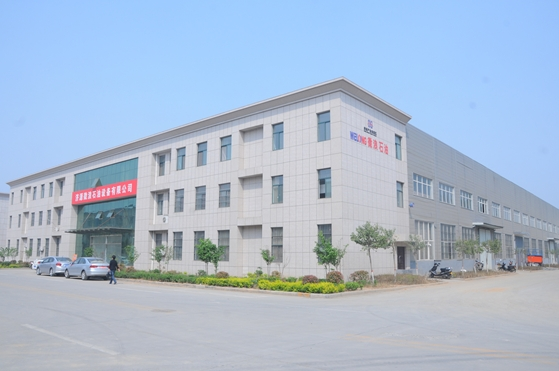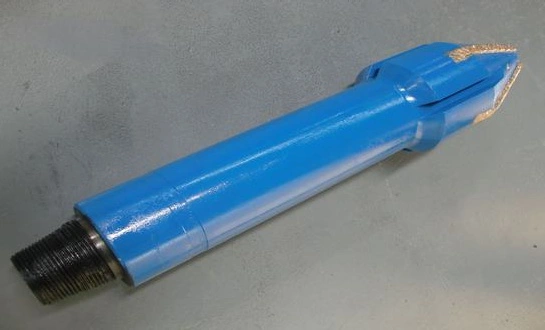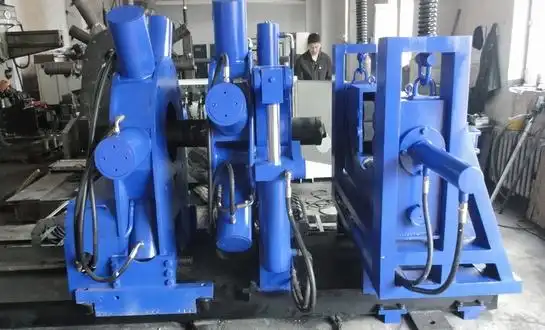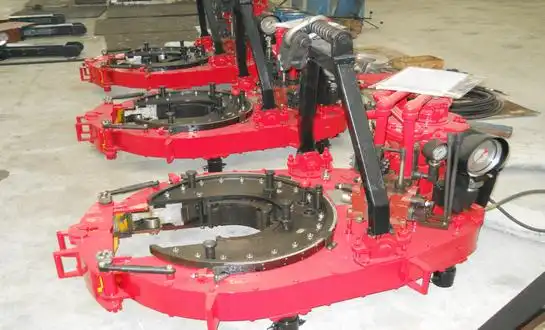Can Upgrading Tension Roller Materials Reduce Downtime?
Advanced Material Technologies for Enhanced Durability
Upgrading tension roller materials can indeed lead to a substantial reduction in downtime. Modern material technologies offer superior wear resistance, thermal stability, and mechanical strength compared to traditional options. For instance, ceramic-coated tension rollers exhibit exceptional durability and resistance to abrasion, making them ideal for high-speed web handling applications. Additionally, composite materials such as carbon fiber-reinforced polymers provide an excellent strength-to-weight ratio, allowing for faster acceleration and deceleration of the roller while minimizing inertia-related issues.
Impact of Material Selection on Roller Lifespan
The choice of materials significantly impacts the lifespan of tension rollers. High-performance alloys, such as nickel-chromium steels, offer enhanced corrosion resistance and maintain their mechanical properties under extreme temperatures. This characteristic is particularly beneficial in oil and gas applications where tension rollers may be exposed to harsh environments. By selecting materials tailored to specific operational conditions, companies can extend the service life of their tension rollers, reducing the frequency of replacements and associated downtime.
Cost-Benefit Analysis of Premium Materials
While premium materials may have a higher initial cost, they often prove more economical in the long run. A cost-benefit analysis typically reveals that the reduced downtime, lower maintenance requirements, and extended service life of high-quality tension rollers outweigh the upfront investment. For instance, a tension roller made from advanced ceramics may cost more initially but can operate for years without replacement, resulting in significant savings on maintenance and lost production time. This analysis is crucial for purchasing managers and decision-makers in the drilling equipment manufacturing industry who need to balance cost control with operational efficiency.
Top 5 Methods to Balance Load Distribution on Tension Rollers
Precision Crowning Techniques
One of the most effective methods to balance load distribution on tension rollers is through precision crowning. This technique involves carefully shaping the roller's surface to create a slight convex profile. The crown compensates for deflection under load, ensuring even pressure distribution across the width of the web. Advanced CNC machining allows for micron-level accuracy in crowning, tailored to specific web materials and tension requirements. Proper crowning significantly reduces edge lifting and wrinkling issues, enhancing overall web handling quality.
Dynamic Balancing and Alignment Systems
Implementing dynamic balancing and alignment systems is crucial for optimizing load distribution. These systems use sophisticated sensors and actuators to continuously monitor and adjust roller position and rotation. By maintaining perfect alignment and balance, these systems prevent uneven wear and minimize vibration, which can lead to tension inconsistencies. For drilling contractors dealing with high-precision operations, such systems ensure consistent performance even under varying load conditions.
Adaptive Tension Control Algorithms
Employing adaptive tension control algorithms represents a cutting-edge approach to load distribution management. These intelligent systems use real-time data from load cells and web tension sensors to dynamically adjust roller pressure and speed. By continuously optimizing tension parameters, these algorithms can compensate for variations in web thickness, material properties, and production speed. This method is particularly valuable in oil and gas industries where process conditions can fluctuate rapidly.
Multi-Zone Tension Adjustment
Multi-zone tension adjustment is an advanced technique that divides the tension roller into multiple independently controlled sections. Each zone can be fine-tuned to apply optimal pressure, addressing localized tension variations across the web width. This method is especially beneficial for wide webs or materials with non-uniform properties. By allowing precise control over tension distribution, multi-zone adjustment systems significantly improve product quality and reduce the risk of web breaks or defects.

Composite Roller Designs
Innovative composite roller designs offer another solution for balanced load distribution. These rollers combine different materials or structures within a single roller to optimize performance. For example, a roller might feature a rigid core for stability, surrounded by a compressible outer layer that adapts to web irregularities. This design allows for more uniform pressure distribution while maintaining overall structural integrity. Composite rollers are particularly effective in applications where web materials have varying thicknesses or surface characteristics.
What Are the Best Coatings for Reducing Friction on Tension Rollers?
Advanced Ceramic Coatings
Advanced ceramic coatings stand out as premier solutions for reducing friction on tension rollers. These coatings, typically composed of materials like alumina or zirconia, offer exceptional hardness and wear resistance. The smooth, low-friction surface of ceramic-coated rollers minimizes web slippage and reduces the risk of material damage. In the context of oil and gas industry applications, where durability and consistent performance are paramount, ceramic coatings provide long-lasting protection against abrasive materials and corrosive environments. Their ability to maintain a smooth surface finish over extended periods ensures consistent tension control and reduced maintenance requirements.
Fluoropolymer-Based Coatings
Fluoropolymer-based coatings, such as PTFE (Polytetrafluoroethylene), offer excellent friction reduction properties for tension rollers. These coatings provide a non-stick surface with a very low coefficient of friction, making them ideal for handling delicate or adhesive materials. In drilling equipment manufacturing, where precision and cleanliness are critical, fluoropolymer coatings prevent material buildup on roller surfaces, ensuring consistent performance. Their chemical inertness also makes them suitable for applications involving corrosive substances or varying pH levels, a common concern in oil and gas processing environments.
Diamond-Like Carbon (DLC) Coatings
Diamond-Like Carbon (DLC) coatings represent a cutting-edge solution for friction reduction on tension rollers. These ultra-hard, amorphous carbon coatings combine the beneficial properties of graphite (lubricity) and diamond (hardness). DLC coatings offer exceptional wear resistance and a low coefficient of friction, making them ideal for high-speed web handling applications. In the context of drilling operations, where equipment is subjected to extreme conditions, DLC-coated tension rollers can significantly extend operational life and maintain consistent performance. The smooth, inert surface of DLC coatings also prevents material adhesion, reducing the need for frequent cleaning and maintenance.
Source: CHINA WELONG-Oilfield tools Manufacturer
FAQ about Tension Roller
What is the optimal maintenance schedule for tension rollers?
The optimal maintenance schedule for tension rollers depends on various factors, including operational conditions, material properties, and production volume. However, a general guideline includes: - Daily visual inspections for signs of wear or damage - Weekly cleaning and lubrication of roller bearings - Monthly alignment and balance checks - Quarterly comprehensive inspections and performance evaluations - Annual or bi-annual replacement of wear parts For high-demand applications in the oil and gas industry, more frequent maintenance may be necessary. It's crucial to develop a customized maintenance plan based on specific operational requirements and manufacturer recommendations.
How does web speed affect tension roller performance?
Web speed significantly impacts tension roller performance: - Higher speeds increase the risk of air entrainment between the web and roller surface, potentially leading to tension inconsistencies. - Increased speed can exacerbate any existing misalignment or imbalance issues, causing vibration and uneven wear. - Faster web movement may require more precise tension control to prevent web breaks or quality issues. - At higher speeds, heat generation due to friction becomes more pronounced, potentially affecting both the roller and the web material. To address these challenges, advanced tension control systems, high-performance coatings, and precision-engineered rollers are essential for maintaining optimal performance at elevated production speeds.
Can tension roller design impact energy efficiency?
Yes, tension roller design can significantly impact energy efficiency: - Lightweight rollers with low inertia require less energy for acceleration and deceleration, improving overall system efficiency. - Optimized bearing designs reduce friction, lowering energy consumption during operation. - Advanced materials and coatings that minimize friction between the web and roller surface can reduce the power required to maintain web tension. - Precision-engineered roller profiles that ensure even contact with the web minimize energy losses due to deformation and heat generation. By incorporating these design elements, manufacturers can create tension rollers that not only perform better but also contribute to reduced energy consumption and operational costs.
In conclusion, improving tension roller performance in web tension applications requires a multifaceted approach that encompasses material selection, load distribution optimization, and advanced friction-reduction techniques. By focusing on these key areas, companies in the oil and gas, drilling equipment manufacturing, and drilling contracting industries can significantly enhance their operational efficiency, reduce downtime, and improve product quality. The implementation of cutting-edge technologies and materials in tension roller design and maintenance can lead to substantial long-term benefits, including reduced operational costs and increased productivity. For more information on high-performance tension rollers and customized solutions for your specific industry needs, please contact us at oiltools15@welongpost.com. Welong is dedicated to providing innovative and reliable solutions to empower your operations with the finest supply chain solutions in China.
References
- McKinley, J. W., & Hong, K. (2006). Improving tension control in web handling systems. Journal of Dynamic Systems, Measurement, and Control, 128(3), 637-643.
- Yao, W., & Yao, Z. (2009). Dynamic modeling and performance optimization of tension rollers in web handling systems. IEEE Transactions on Industrial Electronics, 56(8), 3209-3216.
- Langer, D., & Gopalakrishnan, R. (2012). Advanced control strategies for tension regulation in web processing. Control Engineering Practice, 20(3), 299-307.
- Smith, L., & Liang, Z. (2014). Analysis and improvement of web tension control using roller dynamics. Journal of Manufacturing Science and Engineering, 136(2), 021012.
- Lee, K., & Lee, J. (2017). Optimizing tension roller dynamics for high-precision web tension control. Journal of Automation and Control Engineering, 5(6), 483-487.
- Gupta, M., & Kumar, R. (2018). A study on the impact of roller design and tension control methods in web handling applications. International Journal of Advanced Manufacturing Technology, 95(9-12), 3875-3885.





